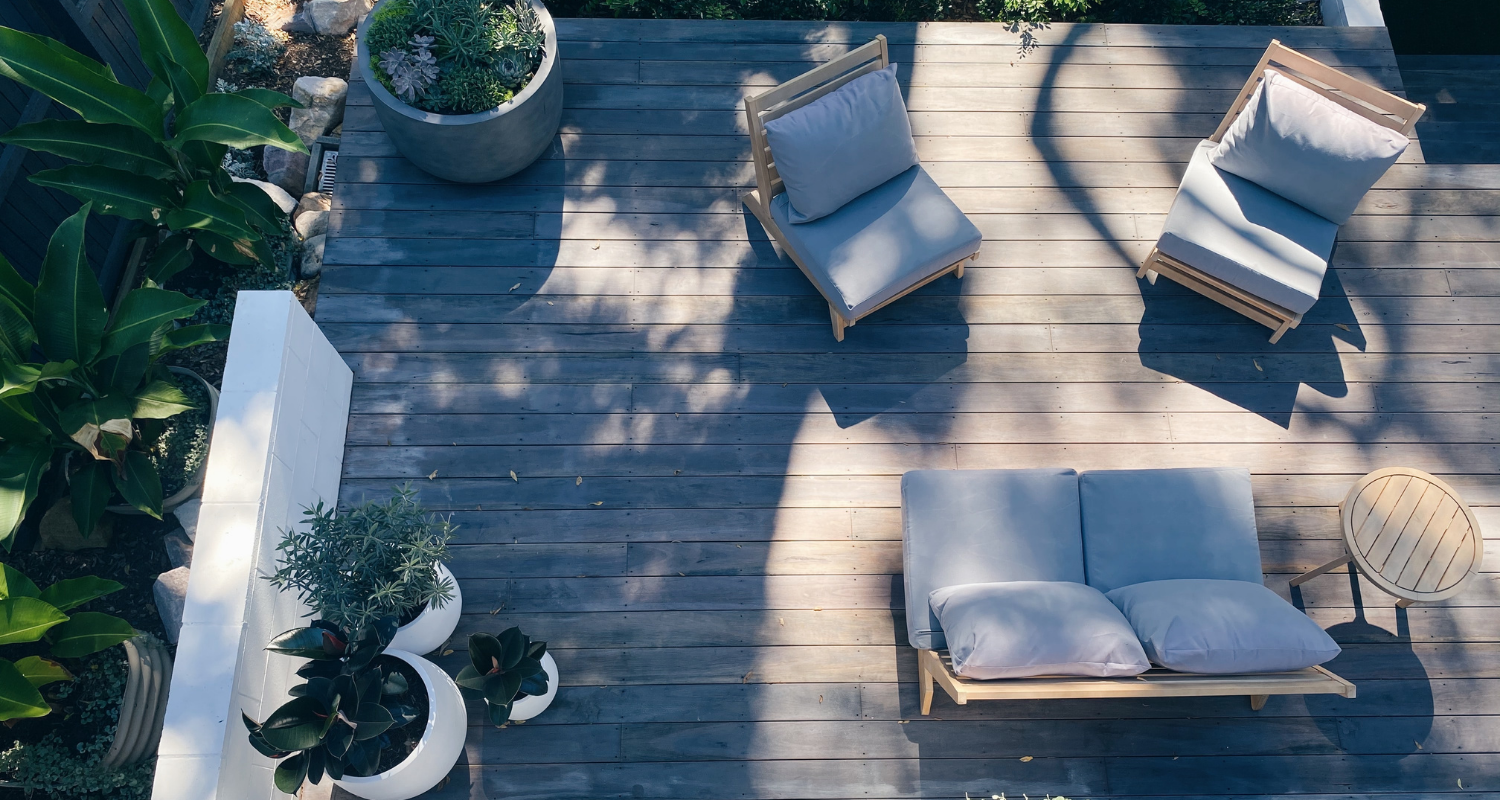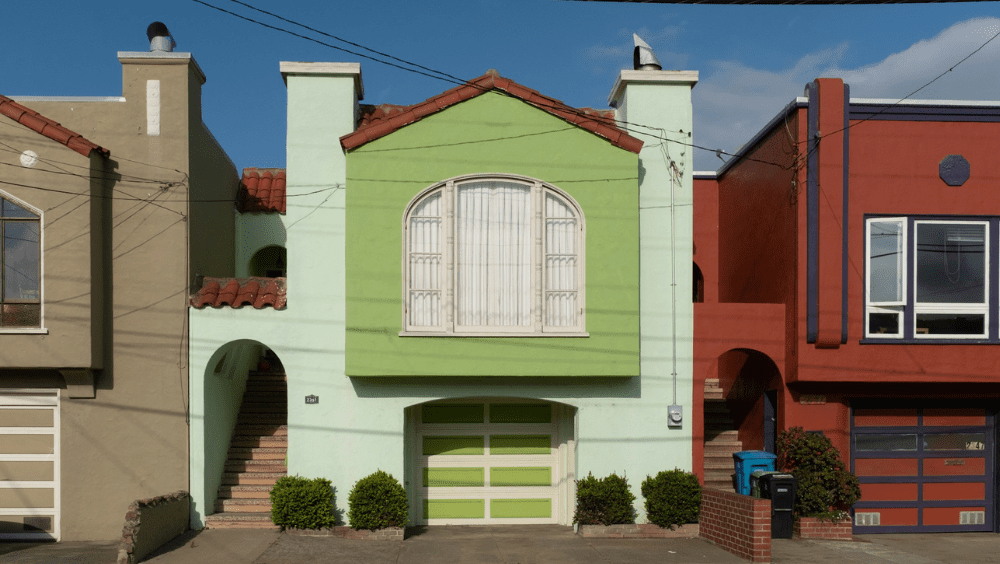
Every few years, you should stain your wooden deck to improve its appearance and protect the wood from rot. But don’t just slap a coat of stain on in a hurry — you’ll need to clean your deck before staining it. If you stain a deck without cleaning and prepping it first, the results will look blotchy, uneven, and, well, amateur. Any time you save skipping the cleaning stage, you’ll spend twice over repairing the botched job. “Homeowners can clean, repair, and restain a deck themselves, but it’s a lengthy project that may take an entire weekend, or multiple weekends – although much of this is drying time,” explains top real estate agent Rick Fuller, who works with 74% more homes than the average agent in Antioch, CA. If you’re ready to invest a weekend revamping your deck DIY-style, follow these steps on how to clean a deck before staining to pull off the job like a pro! Before you even clean your deck, purchase the stain. The stain you choose will determine the best method to clean your deck. “The most important thing is to look at the preparation instructions on your stain to identify the right product to clean the deck before staining,” advises Fuller. “For example, there are products designed to prepare new wood for stain, and there are different products to be used to prepare wood that has been previously stained. And there are also products called brighteners that prepare the wood to make it porous and receptive to the fresh coat of stain.” Some stain directions may instruct you to clean the wood with a cleaner that removes dirt, mildew, and discoloration. Then you’ll treat the wood with a brightener to open up the wood’s pores to be more receptive to the stain color. Other products’ prep instructions may require that you strip and sand your deck as part of the cleaning process before staining the wood. Deck stains come in three different formula types, all of which come with their unique benefits and drawbacks: Pros: Cons: Pros: Cons: Pros: Cons: Aside from formula, stains also vary in transparency. Make sure you buy enough stain to cover the deck with as many coats as the instructions recommend. Use this deck stain calculator to figure out exactly how much you need. Do not underbuy — if you wait too long to apply later purchased stain, you’ll be able to see the divide between the first and second round of staining. Here are the three levels of stain transparency: “There are some seasons and weather conditions that are better than others for staining a deck, so you really need to read through the manufacturer’s requirements on your stain to make sure that you know how and when to properly apply it,” advises Fuller. It’s common sense to check the weather before starting a major outdoor project like cleaning and staining a deck, but you’re not just checking to make sure that there’s no rain in the forecast. For starters, even though spring and summer are when people use their decks the most, those seasons are not the best time to start a restaining project. In summer, the temperatures are often too high. In spring, deck wood still holds too much winter moisture, causing the deck stain to stay on the surface rather than penetrate the water-saturated wood. Experts recommend staining on a day when the temperature is between 50 degrees and 80 degrees. Cleaners need to remain wet for some time to remove stains and mildew and penetrate the wood. Direct sunlight dries out the solvents before they have time to work. Avoid applying the stain on a humid day since moisture in the air slows the drying time. If your deck gets a lot of direct sunlight, wait for an overcast day that’s not too humid to clean and stain your deck. Alternatively, invest in a canopy tent that you can adjust to shade your deck throughout the day. If you’ve ever run your hand along your deck railing and had your skin ripped by an errant splinter, you know the damage that loose nails and screws can do when cleaning a deck. “Before you clean the deck, you need to tighten any loose screws or nails and replace any damaged wood. Otherwise, you might tear your mop or your brush halfway through the cleaning process,” advises Fuller. While replacing damaged or rotten deck boards is a larger DIY project, tightening screws and pounding in loose nails are both relatively easy tasks. Nails are notorious for coming loose on outdoor decks as temperature shifts cause nail holes to open wider than the nail itself. Should you discover that many of your deck nails are loose, pry them out and replace them with outdoor-rated screws longer than the original nails. Use a broom that’s outdoor and rough-surface rated to remove dirt buried in the nooks and crannies of weathered wood. If you fail to do so, grime and gunk will get caught in your stain applicators and ruin your stain. Should you have easy access to the underside of your deck, take a wide paintbrush and run it between planks to knock loose all dirt and debris. If you don’t have easy access to your deck’s underside, insert a “screw in hook” into the end of a broom handle and run it along each expansion groove. The hook can pull out or knock loose debris. Once you clear loose debris and surface dirt, you’re ready to do the heavy-duty cleaning. For that, you’ll need the right cleaner. For decks with minimal damage, stains, and mildew, you’re good to go with an all-in-one deck cleaner. Decks with tougher stains need stronger cleaners. There are four main types of cleaners to choose from to deep clean the dirtiest decks: WARNING: while both are bleaching agents, sodium hypochlorite is NOT the same as liquid household bleach. What you use to apply the cleaner is just as important as the cleaning agent. “Some people use a mop to mop on the cleaner to the deck, while others prefer using paintbrushes, or you can spray it on. Some homeowners even use pads designed to slide along a two by six or two by four board that protrudes into the grooves in between the deck boards for better coverage,” explains Fuller. Once you’ve applied the coat of cleaner to the deck, you need to let it set for at least 15 minutes until it seeps into the wood. If you live in a dry climate or if you’re cleaning and staining on a particularly low-humidity day, periodically lightly mist your deck with water for optimal results. A superfine mister attachment on your garden hose will do the trick. While the deck is wet, check it over for any black spots that signal mold or mildew and treat areas appropriately. Also, check for signs of water beading on the surface, which likely indicate mill glazing that you must sand off before you stain. Once the cleaner has had enough time to work on your deck surface, scrub the deck down to knock loose embedded dirt that can ruin your staining application. Save time and energy by using a deck cleaning brush that hooks up to your garden hose so that you don’t need to worry about keeping the deck wet as you scrub. After scrubbing down every inch of your deck surfaces, thoroughly rinse the deck down with a garden hose sprayer attachment that lets you control the power, direction, pattern, and water flow. This type of sprayer lets you adjust settings to get in all the nooks and crannies of your deck without the wood-gouging intensity of a power washer. Never forget that your wood deck was once a living, growing tree, and as such, it has needs that artificial materials don’t – namely brightener. Wood cleaners and strippers increase the pH levels in your wood, causing it to darken or even blacken. A brightener lowers the pH level to restore the wood to its natural color. It also acts as an agent to open the wood’s pores so that the surface is more receptive to the stain. You want the brightener to penetrate the wood as deeply as possible, so it’s best to apply it while the deck is still wet after rinsing off the cleaning agent. After the brightening agent has done its job (see manufacturer instructions to determine how long to allow the brightener to work), thoroughly rinse away the brightener. If you do not adequately rinse away the brightener, it will continue lowering the wood’s pH level, which can also hinder the wood from absorbing the stain. “It typically takes a period of time for the cleaner to work before it’s ready for the brightener,” explains Fuller. “After the brightener goes on, there’s another period of drying and preparation before you’re ready to stain.” While there are many deck brighteners on the market, you may want to purchase a cleaning and brightening set to ensure that both agents work well together. Some cleaning and brightening solutions might restore your deck, and you won’t need to restain. “Some decks that aren’t properly maintained take on a dark brown or even black color and appear much older than they are due to the discoloration,” explains Fuller. “Many times, homeowners find that products designed to clean decks bring back the original wood color, even if it’s discolored from the sun. These products typically have both a cleaner and a brightener that restore the deck by opening the pores of the wood.” Use the same garden hose sprayer attachment that you used to rinse away the cleaner to rinse off the brightener. While you may be tempted to use a power washer to do this, don’t. Even at the lowest setting, power washers may gouge or scar your deck. They also force the water deep into the wood, which may take days to dry thoroughly. Even if you just use a regular hose to rinse down your deck after cleaning and brightening, you should wait at least 24 hours before using the deck to ensure it’s completely dry. As soon as your deck is dry, you’re ready to start staining!Step 1: Pick the right stain type
Stain formulas
Water-based exterior stains (including acrylic stains)
Oil-based exterior stains (alkyd stains)
Hybrid exterior stains (blend of alkyd and acrylic stains)
Stain transparency
Step 2: Check the weather (and your stain’s prep instructions)
Step 3: Make repairs and refinish the wood as needed
Step 4: Clear the deck of furniture and debris
Step 5: Apply the cleaner
Choose efficient cleaning tools
Step 6: Scrub and rinse
Step 7: Apply the brightener ASAP!
Does your deck really need restaining?



